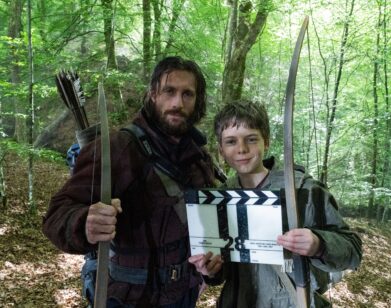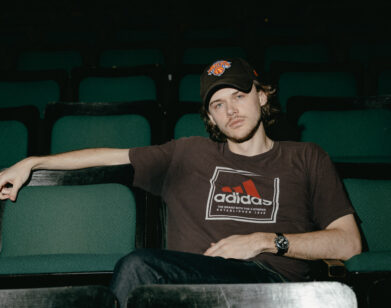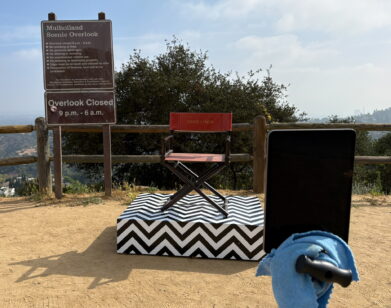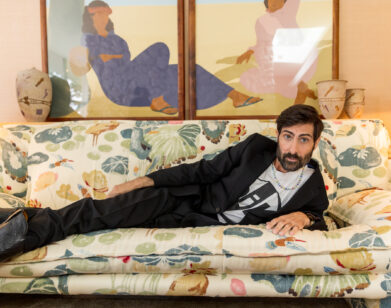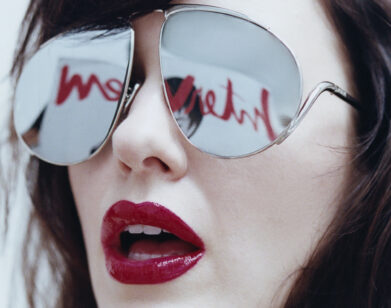Teen Wolf
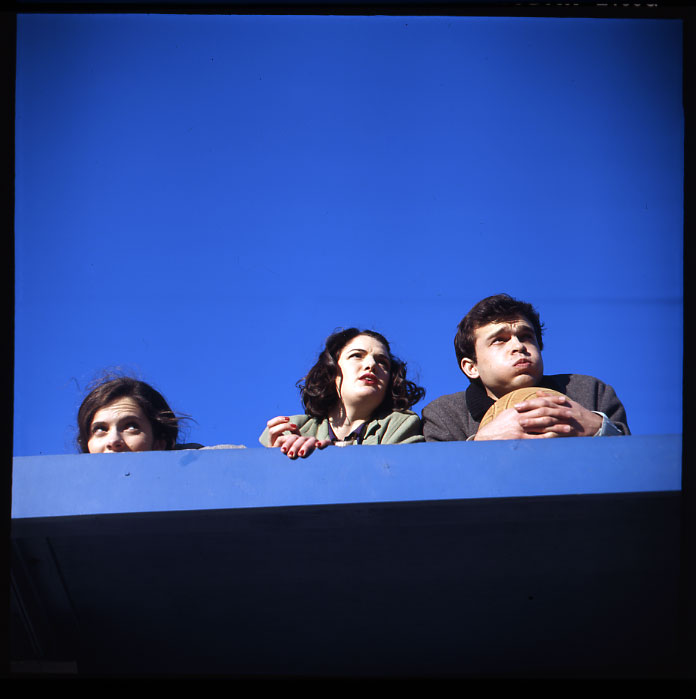
ARCHIVAL PHOTO COURTESY OF MATT WOLF
Hayley Mills, Sandra Dee’s Gidget and Annette Funicello’s beach parties, Éric Rohmer’s Pauline, Claire, and Haydée, Pialat’s Suzanne, John Hughes’ Brat Pack and Harmony Korine’s Kids, James Dean’s Jim Stark, sexually repressed Deanie Loomis, Cooley High’s Preach and Cochise, Tenoch and Julio’s road trip, Gus Van Sant’s Elephant, ’90s Shakespeare reduxes, dance-offs, and horror film franchises, Marty McFly, Mark Hunter, and Max Fischer: without question, teenagers have been some of film’s most enduring and favorite characters. So much so, that most of what we know about that bewildering period in life—the angst, the fear, the style, the slang, the urgency and revolt—has been culled from personal experience or pop culture. That is, until now.
Matt Wolf, the critically acclaimed director of Wild Combination: A Portrait of Arthur Russell, is at work on his second feature documentary, Teenage, based on punk author Jon Savage’s book of the same name. Wolf, whose prior preoccupations with global youth culture were further galvanized by Savage’s book, is adding his own spin on historical documentaries by pairing archival footage with dramatic reenactments, some of which have been inspired by found teenage diaries. Further genre-buckling influences include film essayist Adam Curtis’ The Power of Nightmares and Century of the Self, as well as Woody Allen’s 1983 mockumentary Zelig.
With researchers in Washington DC, New York, London, and Germany, Wolf’s Teenage team is big. “That’s been the exciting part,” the 28-year-old filmmaker notes. “I have this kind of incredible pool of material that is going to explode onscreen.”
As if signing a contract not only with himself, but with the world, Wolf has created a website that includes a punk fanzine-type daily blog that ranges from a guest spot from Spencer Tweedy, teen blogger, photographer, and son of Jeff, to a series of LIFE photos of teens pre-AIM gabbing on the phone, to just today, a look back at young FSLN Sandinistas in Nicaragua. The website also features a teaser narrated by Jena Malone and scored by Bradford Cox, previewing Wolf’s intention to blur scripted revivals and documentary and starring Alden Ehrenreich, Liz Raiss, and Rose Schlossberg.
DURGA CHEW-BOSE: After reading Jon’s book, what pushed you to adapt it, so to speak? Was your response immediate?
MATT WOLF: When I was finishing my first film, Wild Combination: A Portrait of Arthur Russell, I was brainstorming broadly about the next I wanted to make. When you make documentaries, a lot of ideas sort of fall apart because you can’t get access to characters or somebody’s already covering a subject. I read Jon’s book and I was really blown away by it. But I was also overwhelmed.
CHEW-BOSE: Because you couldn’t conceive of how it would be adapted? There was too much?
WOLF: It’s so dense, and the material is historic—there are so many red flags in the material that say “difficult” to me.
CHEW-BOSE: Like what?
WOLF: I guess the sheer density of material… a mountain of research. I had always really admired Jon as a writer from his book England’s Dreaming, which is this definitive history of punk. And he is somebody who is not an academic but writes with rigor, and he matches that with incredible style. He’s a great storyteller, and I was drawn to that punk attitude that plays out in his telling of this material. So I thought what if I made a historical film that’s not like your typical PBS historical film, but instead stylized and experimental in a unique way. When I reached out to Jon, I immediately felt a connection to him and that collaboration really started organically.
CHEW-BOSE: So in terms of the writing for Teenage—“Written by Jon Savage”—does that mean there are scripted parts of the doc? What’s the collaboration like between the writer and the director in this documentary?
WOLF: Well, there’s two kinds of research. There’s finding the footage, the visual primary sources, but then there’s the research involved in constructing the big ideas. It took Jon over seven years to write Teenage. He read hundreds if not thousands of books that helped him create this pre-history of the teenager.
CHEW-BOSE: How far back does it go?
WOLF: His book goes back to 1845. Our film starts around 1910. So the film is narrower in scope than the book. But because the film is so dependent on Jon’s research and because the film is constructed heavily from scripted voiceover performed by actors instead of historians and talking-head experts, the script is a big part of it. So in some way, this is kind of a hybrid film. That being said, much of the narration will be derived from actual teenage diaries that Jon found in his research. It’s a unique collaboration between a writer and a director.
CHEW-BOSE: Why documentary as your chosen medium?
WOLF: Well, I’m really interested in using archival footage and appropriating material that already exists. I like transforming its context and its original meaning. In everything I’ve ever done, archival footage has always been the center. For my first film, there were only two or three recorded video clips of Arthur Russell performing, and only one audio recording of him speaking, so I had to be creative and make my own archival footage to bring his story to life. I shot a lot of original stuff that resembled period home movies, shot on VHS and Super 8. And so this kind of is in a similar vein, but on a much bigger scale. We have over 90 hours of archival footage and over 3800 photographs that we’ve sourced. But to complement that, we’ll also shoot recreations that will look like period home movies from the 1920s, ’30s, and ’40s.
A PERIOD REENACTMENT FROM TEENAGE. FILM STILL COURTESY OF MATT WOLF
CHEW-BOSE: What will the range in Teenage be like in terms of content? Youth uprisings? Revolutions? Fashions? And in what ways are you working to keep contemporary?
WOLF: The film will be locked in this period between the First World War and the Second World War. We think about it as a film that ends with a beginning. And that the idea or concept of the teenager that was born in 1945 is this model for youth that still exists today. That model is the teenager as a democratic consumer. Even though the film is based in that period, the parallels with today are uncanny.
CHEW-BOSE: When was the teenager invented, so to speak? When was the first coining of the word “teenager”?
WOLF: It was the publication of this article called The Teenage Bill of Rights in 1945… it was the first to coin the word “teenager.”
CHEW-BOSE: Where was it published?
WOLF: It was in The New York Times, and it was in the form of Ten Commandments or The Constitution…
CHEW-BOSE: Like a manifesto.
WOLF: Yeah. It was like a manifesto that listed the rights of teenagers, and it basically said they’re democratic, and they can make their own choices, and that they’re consumers with minds of their own. It was kind of like a contract between adults and youth. If adults let young people spend money to buy the things that they wanted like clothes, records, magazines, and they allow youth to define themselves, young people would behave and not act like juvenile delinquents or hooligans. So the Teenage Bill of Rights is this resolution and contract between the generations that finally defines the role of youth. It also represents the triumph of the American way because at the end of the World War II, this idea of the young person as a consumer, would spread all over the world.
CHEW-BOSE: You mentioned before that you didn’t want it to be like PBS documentary, though I’m sure you appreciate or even love PBS documentaries.
WOLF: Oh, yeah, I do. I love Ken Burns documentaries.
CHEW-BOSE: Your hope to sort of spin the traditional documentary or revitalize it—can you speak to that a little more as a documentary filmmaker?
WOLF: I think it’s about modifying conventions. A lot of historical films explain things and use archival footage and photographs in a demonstrative way, rather than dramatizing history. I think the way to unlock history is to make it resonate today. For instance, by using archival footage in a stylized way so that it becomes something that people form a connection to right now. Or using contemporary music, as we will in Teenage, to contrast the period and to create a kind of cool anachronism. Or instead of having historians telling you about teenagers, we’re looking to teenage diaries and using young actors to bring those stories to life. We’re telling the story from the point of view of youth.
CHEW-BOSE: Will the way teenagers are portrayed in film and television be at all a part of the film?
WOLF: The roots of that are in the movie. I think there are two threads in the movie. This intense generational conflict between adults trying to control youth because they represent the future, and young people trying to create their own world that’s separate from their parents. But the other thread is the rise of a youth market where young people pioneer new styles, or new modes of expression that become mass, global phenomena. In the 1920s it’s flappers and the bright young things and flaming youth, and in the ’30s it’s swing, in the ’40s it’s the sub deb and the bobby soxer—the iconic teenage girl who’s screaming at a concert. So really it’s these archetypes that have evolved through history and have become tropes in films and in pop culture. This film looks at the roots of those styles and types and shows how they proliferate. For instance, swing starts as African-American subculture and then it becomes popularized by young people of many races in America, and then that phenomenon becomes so popular it spreads first to England and then to Germany. But in Nazi Germany, swing is illegal, but a group of teenagers called the Hamburg Swing use swing music to creatively and bravely resist the Nazis. So it’s really interesting to trace this invention that’s popularized by young people, but ends up taking on a whole new meaning across the globe. I guess the point is, style and pop culture can be truly provocative and political.
FOR MORE INFORMATION ON TEENAGE, VISIT ITS WEBSITE.

